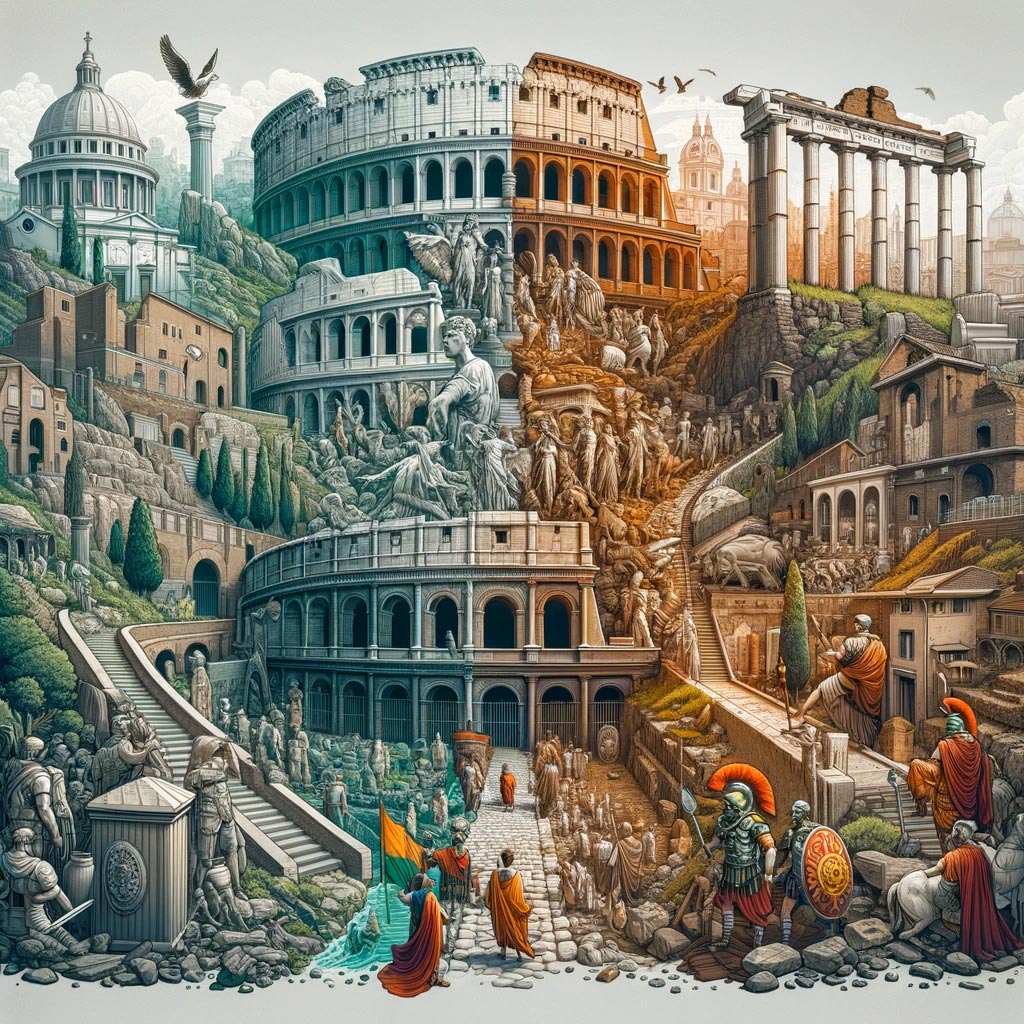
Rise and Fall of the Roman Empire: A Comprehensive Overview
The Roman Empire, once the most powerful civilization of the ancient world, has left an indelible mark on history, culture, and governance that continues to resonate in modern society. Its expansive reach, innovative governance, military strategies, and cultural contributions remain subjects of fascination and study. This article delves into the Roman Empire's history, from its inception to its decline, exploring the key elements that contributed to its rise and fall, and highlighting its enduring legacy.
The Foundation and Rise of Rome
The story of Rome begins with the Roman Republic, established in the 6th century BCE, laying the foundation for a civilization that would grow to dominate the Mediterranean world. The Republic was characterized by a form of government that allowed for a degree of citizen participation, a novel concept at the time, which was instrumental in Rome's expansion. The governance structure, with its consuls and Senate, created a balanced system of checks and balances that facilitated both domestic stability and an aggressive expansion policy.
Rome's military prowess was unmatched, with innovations such as the legion, a flexible military unit that allowed for more dynamic and strategic combat formations. The military conquests of Rome not only expanded its territory but also brought wealth and resources, further strengthening its position as a dominant power.
Governance and Society
Roman governance evolved significantly with the transition from the Republic to the Empire in the 1st century BCE. The ascent of figures like Julius Caesar and his successor Augustus marked the beginning of the Roman Empire and a new era of centralized power. Augustus' reign heralded the Pax Romana, a period of unprecedented peace and stability that lasted for over two centuries, fostering an environment where arts, culture, and economy could thrive.
Roman society was complex and stratified, yet it offered upward mobility for certain segments through military service, commerce, and participation in public affairs. The legal system of Rome, with its emphasis on written laws and rights of citizens, became one of its most significant legacies, influencing the legal frameworks of many modern nations.
Cultural Contributions and Technological Advancements
The Romans were adept at assimilating cultures from the territories they conquered, which enriched Roman culture with diverse influences. From the pantheon of Roman gods adapted from the Greek deities to architectural styles that incorporated Egyptian and Hellenistic elements, Roman culture was a vibrant tapestry of influences that shaped its identity.
Technological and architectural advancements are hallmarks of Roman civilization. Aqueducts, public baths, roads, and monumental buildings not only demonstrated Roman engineering prowess but also improved the quality of life and connectivity within the Empire. The Latin language, another significant legacy, evolved into the Romance languages and remained the lingua franca of the educated and literate in Europe for centuries.
Military Strengths and Challenges
The Roman military was the cornerstone of the Empire's expansion and the maintenance of its territories. However, the military's reliance on conquests for resources and slaves, along with the logistical challenges of managing a vast empire, eventually strained Rome's resources. Additionally, the military became a political power in its own right, often entangling itself in the Empire's political affairs and contributing to internal instability.
Decline and Transformation
The decline of the Roman Empire is a multifaceted phenomenon, influenced by economic, military, and political challenges. External pressures from invading tribes and internal fragmentation due to succession crises weakened the Empire. The division of the Empire into the Western Roman Empire and the Eastern Roman Empire, later known as the Byzantine Empire, marked the beginning of the end for Rome as a unified entity.
The fall of Rome in the 5th century CE did not, however, signify the end of Roman influence. The Byzantine Empire continued to preserve Roman laws, culture, and traditions, serving as a bridge between the ancient and medieval worlds. Furthermore, the legacy of Rome's contributions to law, governance, architecture, and language continues to influence modern societies around the globe.
Conclusion:
The Roman Empire's story is one of rise, domination, and eventual decline, but its legacy is eternal. Its contributions to governance, law, culture, and technology have shaped the development of Western civilization and continue to be a source of inspiration and study. The Roman Empire serves as a powerful reminder of the heights humanity can reach through innovation, leadership, and societal organization, as well as the vulnerabilities that can lead to decline.
In examining the Roman Empire, we gain insights into the complexities of empire-building, the importance of sustainable governance, and the enduring impact of cultural and technological advancements. The history of Rome is not just a tale of the past; it is a lens through which we can understand the present and anticipate the future, making it a subject of enduring fascination and relevance.
History



